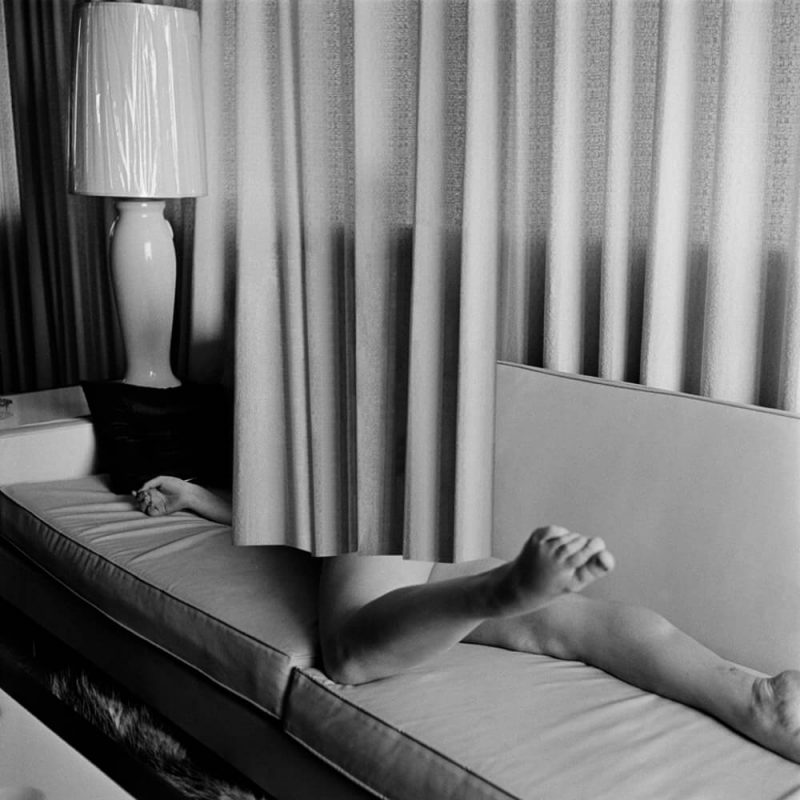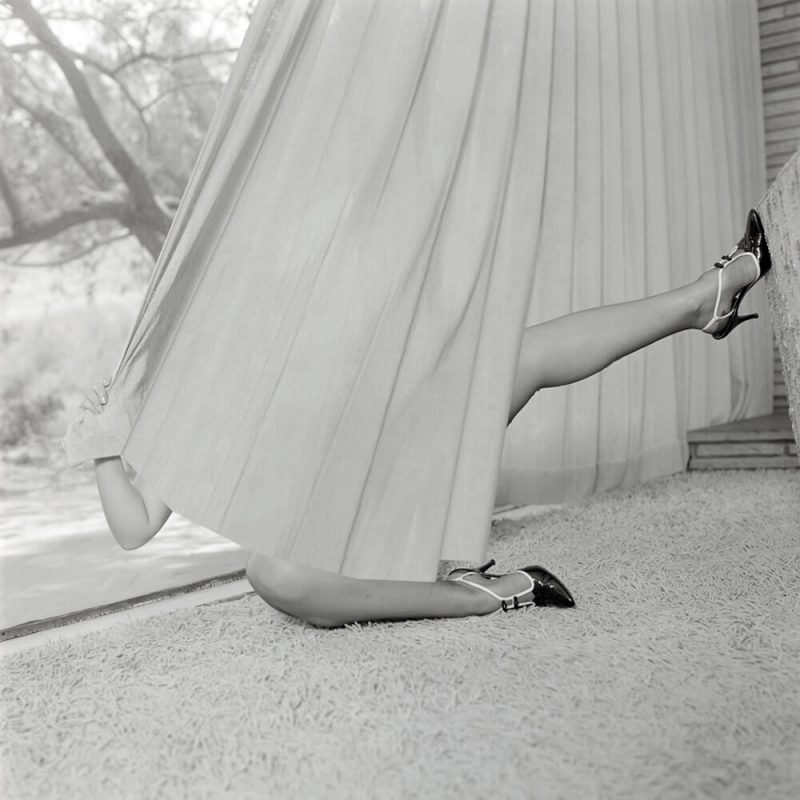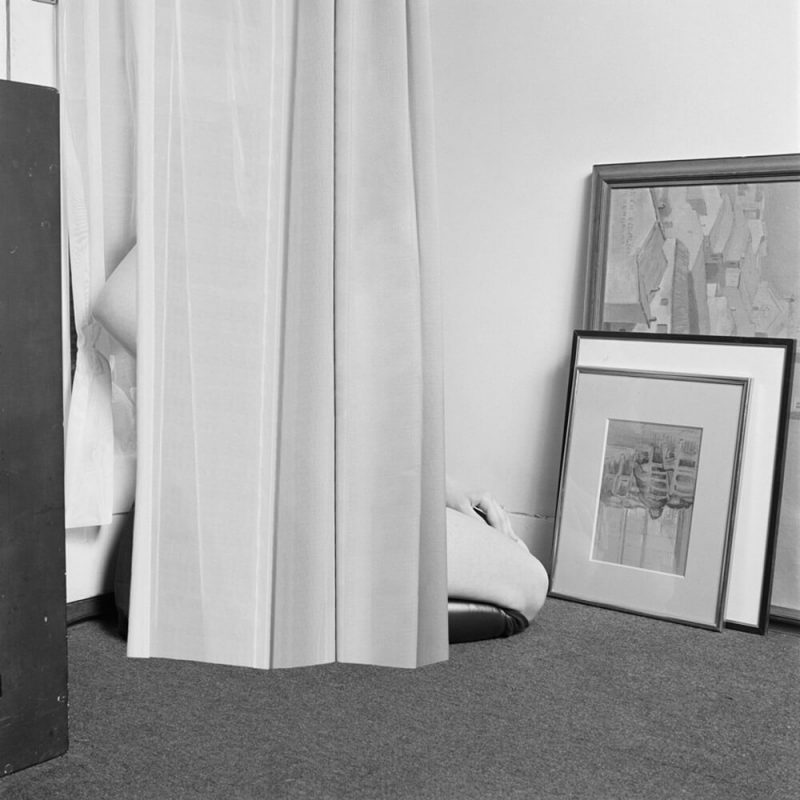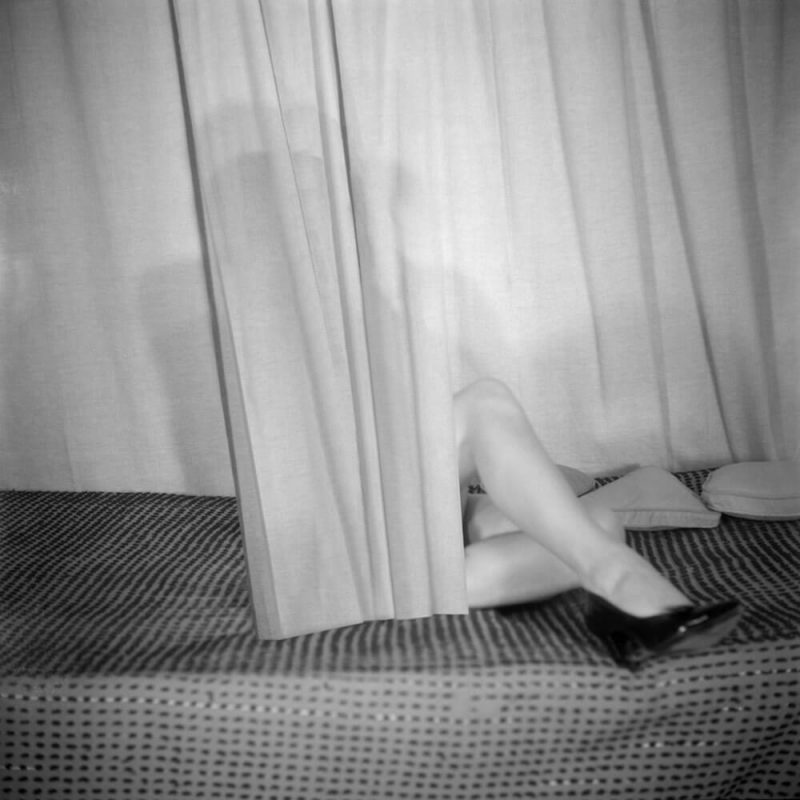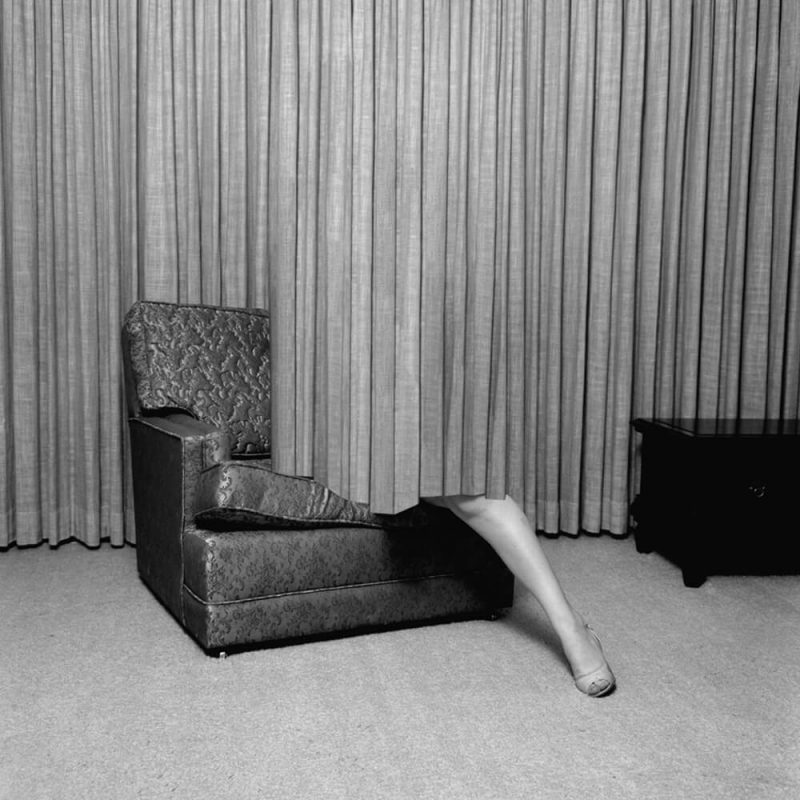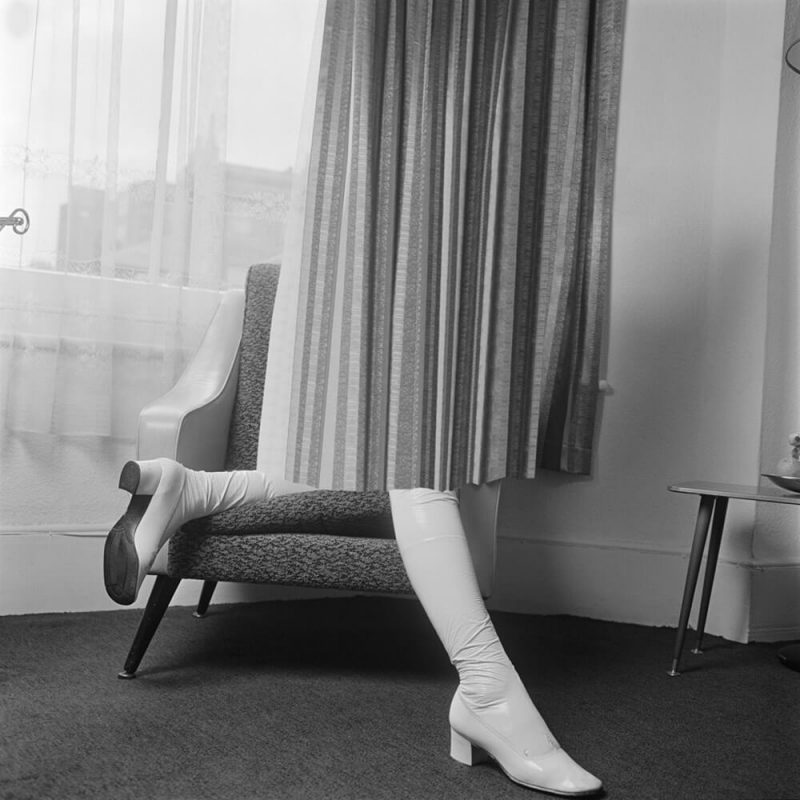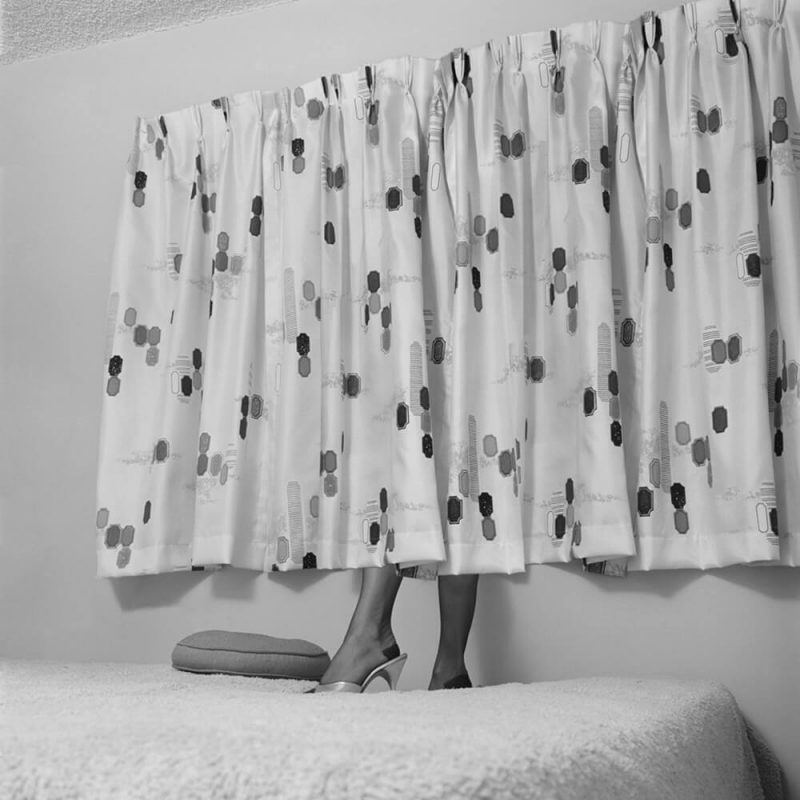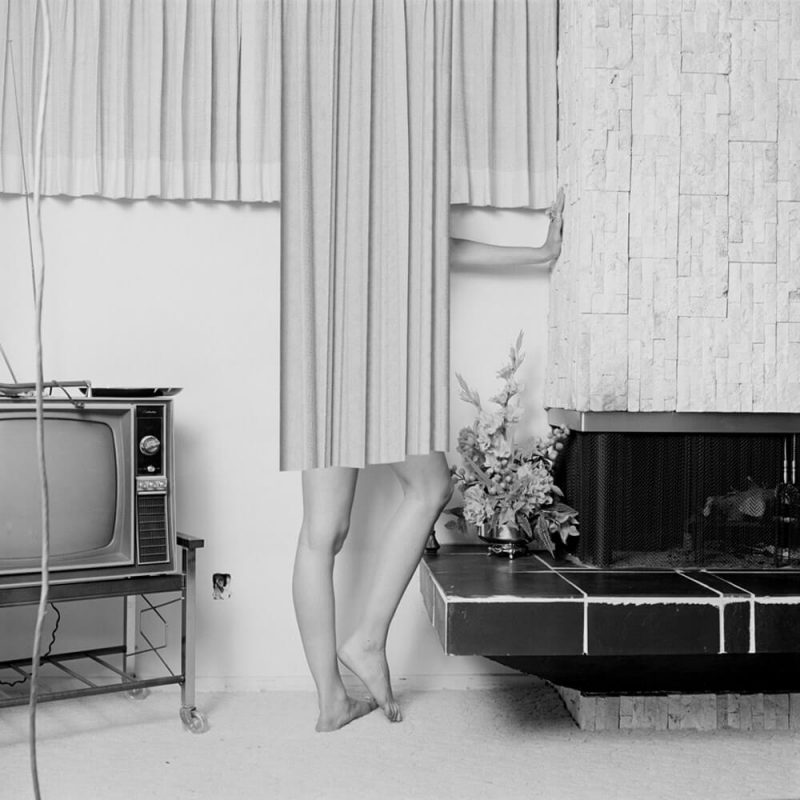Eva Stenram
Drape
Exhibition review by Louise Clements
Parc des Ateliers, Arles, France
02.07.12 – 23.09.12
One of the highlights of my visits to Les Rencontres d’Arles is the section of the festival dedicated to the Discovery Award exhibitions, housed in the giant, dusty, former train sheds of Parc des Ateliers. For ten years Maya Hoffman’s LUMA Foundation has supported both this prize and the Contemporary and Historical Book Awards. Focused on photographers or artists making use of photography it is selected by a different jury of five individuals from different photographic fields every year, who nominate three artists each to exhibit their work as potential candidates. Their selection of work is not always new to the field but does often serve to highlight a zeitgeist or status quo in contemporary photographic practice in as much as it mirrors what those particular photography professionals are most enamoured by at that time. The jury’s criteria is to nominate ‘work that has been recently discovered internationally or deserves to be’. Each photographer has a separate area to exhibit their work and the festival audiences at the opening week are invited to vote on who deserves the 25,000 € prize which is later awarded in the Roman outdoor ‘théâtre antique’ to sell out audiences near to 10,000 people. The anticipation and discussions around who is the most deserving nominee is part of the Arles opening week experience. It stimulates debate and facilitates the formation of often polar opposite opinions on what contemporary photography practice is relevant reference today.
Anticipation was one of the one of the most arresting aspects of a series of works nominated by Olivier Richon, Professor of Photography at the Royal College of Art, by Eva Stenram titled – Drape. Introducing the work in his curatorial statement, Richon writes: “Eva Stenram works with photographic images conceptually, paying attention to what forms an image. The digital is a tool for reading and reappraising an analogue image. She reveals aspects of the picture that have been overlooked. She occludes the main subject of the image in order to produce a contemporary version of Parrhasius’s veil, where bodies are either erased or partially concealed. Neither collage nor montage, the photograph here becomes a new keyhole that triggers our desire to see.”
Vintage, pin-up photos are the inspiration and direct material for the series, the title of which, Drape, interprets the work in relation to the subjects in the images – the women who literally drape themselves around the set but also in terms of the curtains that conceal them. All of the images are subtle,black and white interiors shot in a similar style with each woman, or so we assume, positioned in front of a window. The artist’s intervention in the image is to extend the curtains to conceal the head and torso. The images remind me in someway of certain works by Louise Bourgeois, namely the disaggregation of body parts, controlling the material and the information that is exposed. They especially recall her drawings where she would combine half woman-half house, a birdcage with legs and so on.
Stenram deliberately focuses on the lower body or arms while removing the reciprocal gaze from the subject by veiling the head and torso. Through the impossibility of eye contact we are free to leer, unmediated as voyeurs. We can survey the details in each image unencumbered by conscious relations or responsibility to the other, thereby objectifying the body and the potential for fetishism. Simple graphic and inanimate hands, feet, ankles become more tantalising when isolated for examination.
The square format images in Drape are reproduced and manipulated, re-appropriated from the analogue original to develop additional layers of meaning. They reconfigure the structure of the image, reducing the information and shielding like in a strip tease, almost playfully censoring the once naked body, which is enveloped by the new digital curtain. Lack, according to Lacan, is always related to desire and is what causes it to arise. The relational psychological effect of the objectification of the body can be read in many directions; Lacan’s theory on the gaze explores the idea that the subject loses some degree of autonomy upon realising that he or she is a visible object. But the images are vintage, re-appropriated by an artist and the individuals remain anonymous. So where does that leave us?
Francis Hodgson, Photographic critic at The Financial Times, also highlights another subtle contradiction that is present in her work. In his paper, he writes that the work is “gently feminist, as if it were an attempt many years later to undo the presumed exploitation of the models.” He goes on to add: “Yet, at the same time, we can see that these pictures replace one kind of teasing by another: we can’t quite see, we want to peer. We want, in effect, to peek under the newly enlarged curtains a bit.”
With theatrical wit we are made to wait uselessly for the performer to come out from behind the curtain, to fulfil desires, to meet our gaze. However, as much as we desire this unveiling it remains unrequited thus we are left satiated by the image itself, examining each fold in the fabric, the partially covered body and its shadow beneath. The subjects are set in domestic space, perhaps alluding to 1950s or 1960s’ interiors, with deliberately posed models in classical, confident postures and with groomed bodies. Quite different to the images later associated with the home, of bored housewives and readers’ wives. These women confidently perform for the camera in a set with banal décor.
Stenram’s work differs from other collage that often mixes with the unfamiliar to create unusual collisions of form and content. These images are extended within themselves to conceal information and reduce the exposure of the subject. The manipulations are sophisticated, clear in their precision and reproduction of the material. Physically and tonally, they are convincing whilst subtly surreal. The lengthening of the curtains offers a simulacrum, a likeness, a representation through photography, which in itself is a copy of the real. Jean Baudrillard famously explained that a simulacrum is not only a copy of the real, but can be a truth in its own right, the hyperreal. Stenram’s hand in the image creates a rupture in the scene – a glitch that develops an uneasiness. It disrupts our belief in the image, but makes it no less believable.♦
Born in Sweden, Eva Stenram studied at the Slade School of Fine Art and the Royal College of Art. She has exhibited internationally, including shows at the V&A Museum, Zendai Museum of Modern Art (China), Museum of Contemporary Art Teipei (Taiwan), Seoul Museum of Art (South Korea) and Bhau Daji Lad Mumbai City Museum (India). Her work has featured in several magazines including Architectural Review, Blueprint, Source, Succour and The New Statesman.
Eva Stenram worked as a lecturer in Fine Art, Photography and Video Art at the University of Bedfordshire from 2006-2010 and has been a visiting lecturer at the University of Creative Arts, Derby University, Glasgow School of Art, Southampton Institute and the Arts Institute at Bournemouth.
All images courtesy of the artist. © Eva Stenram

